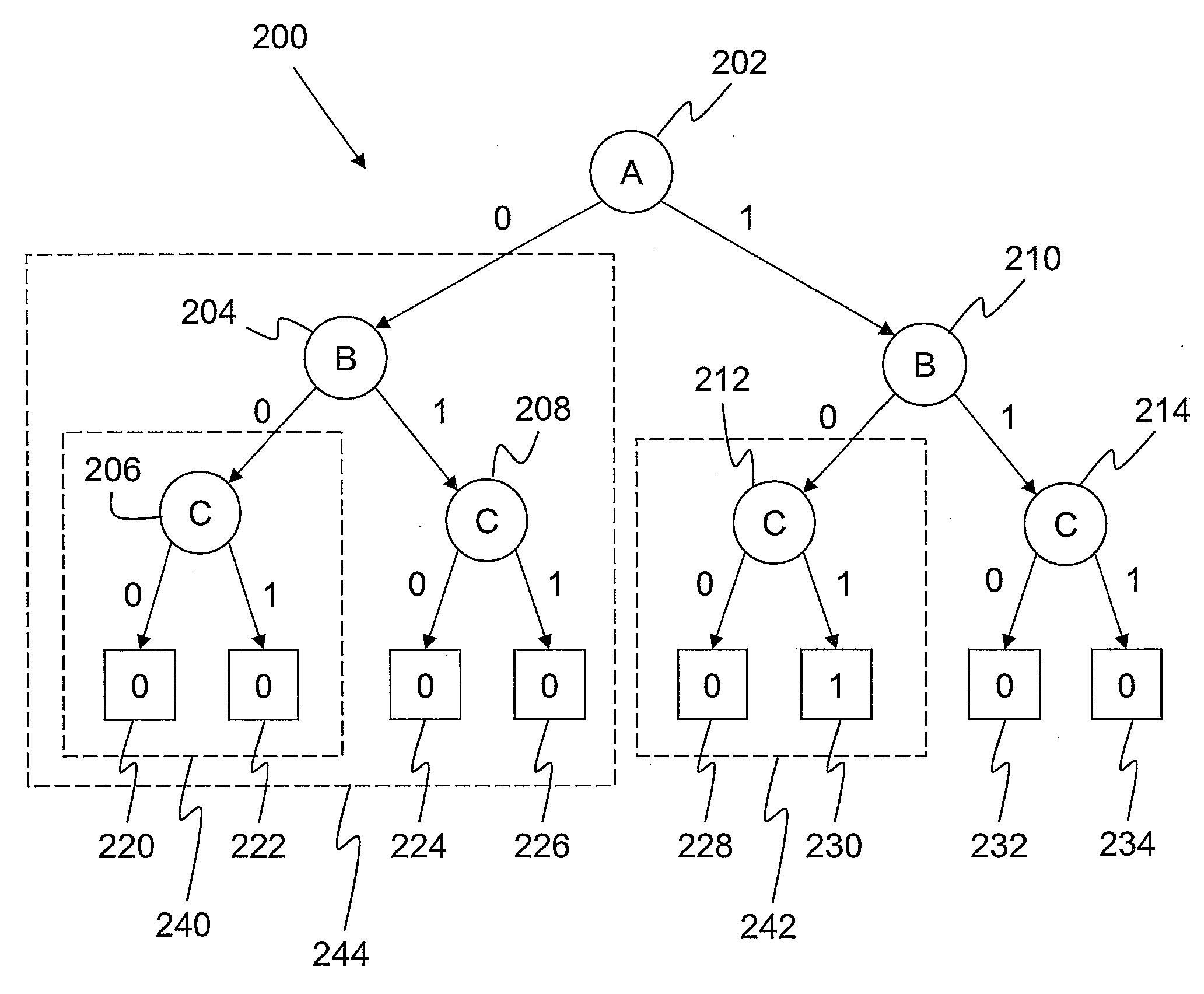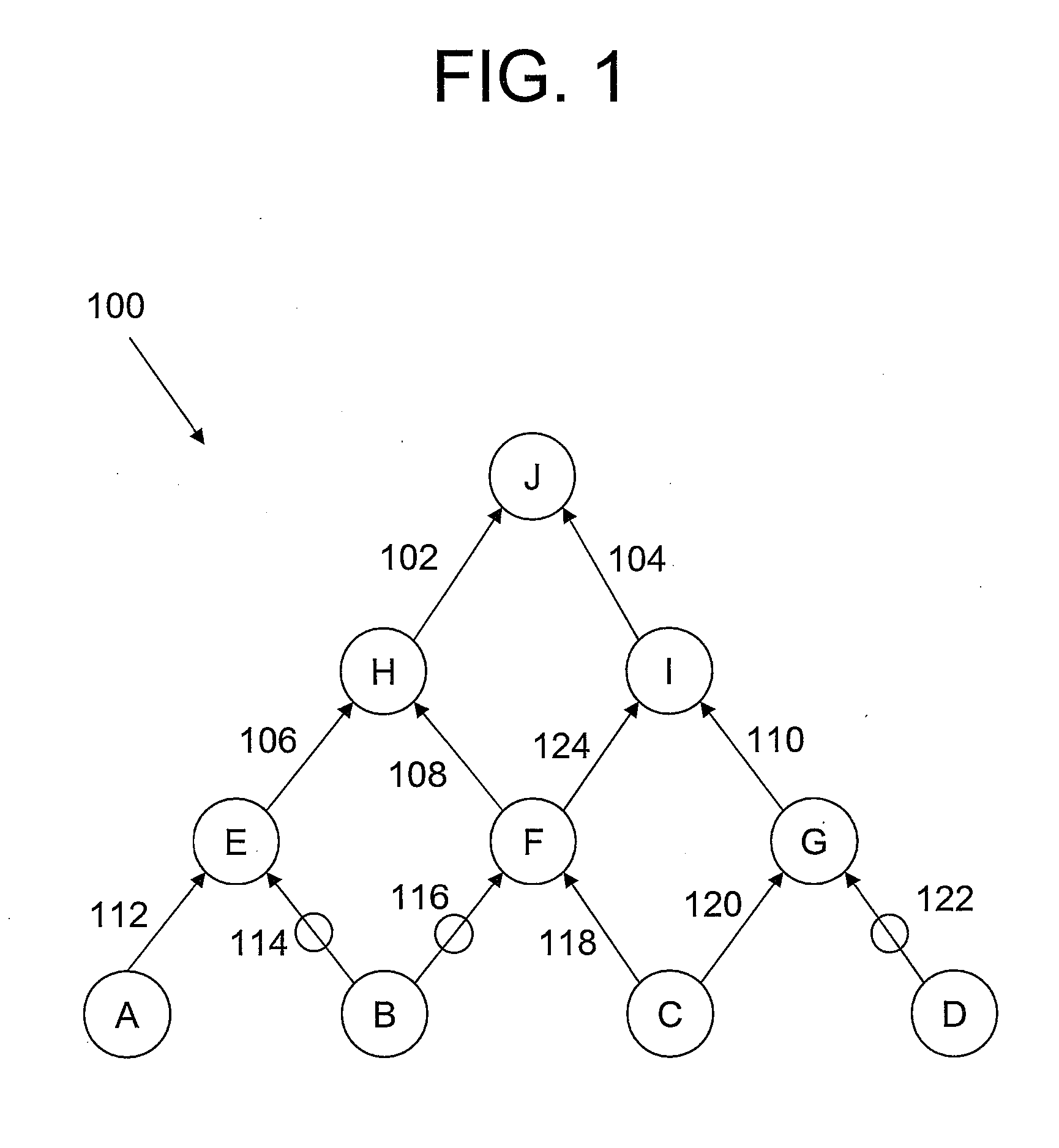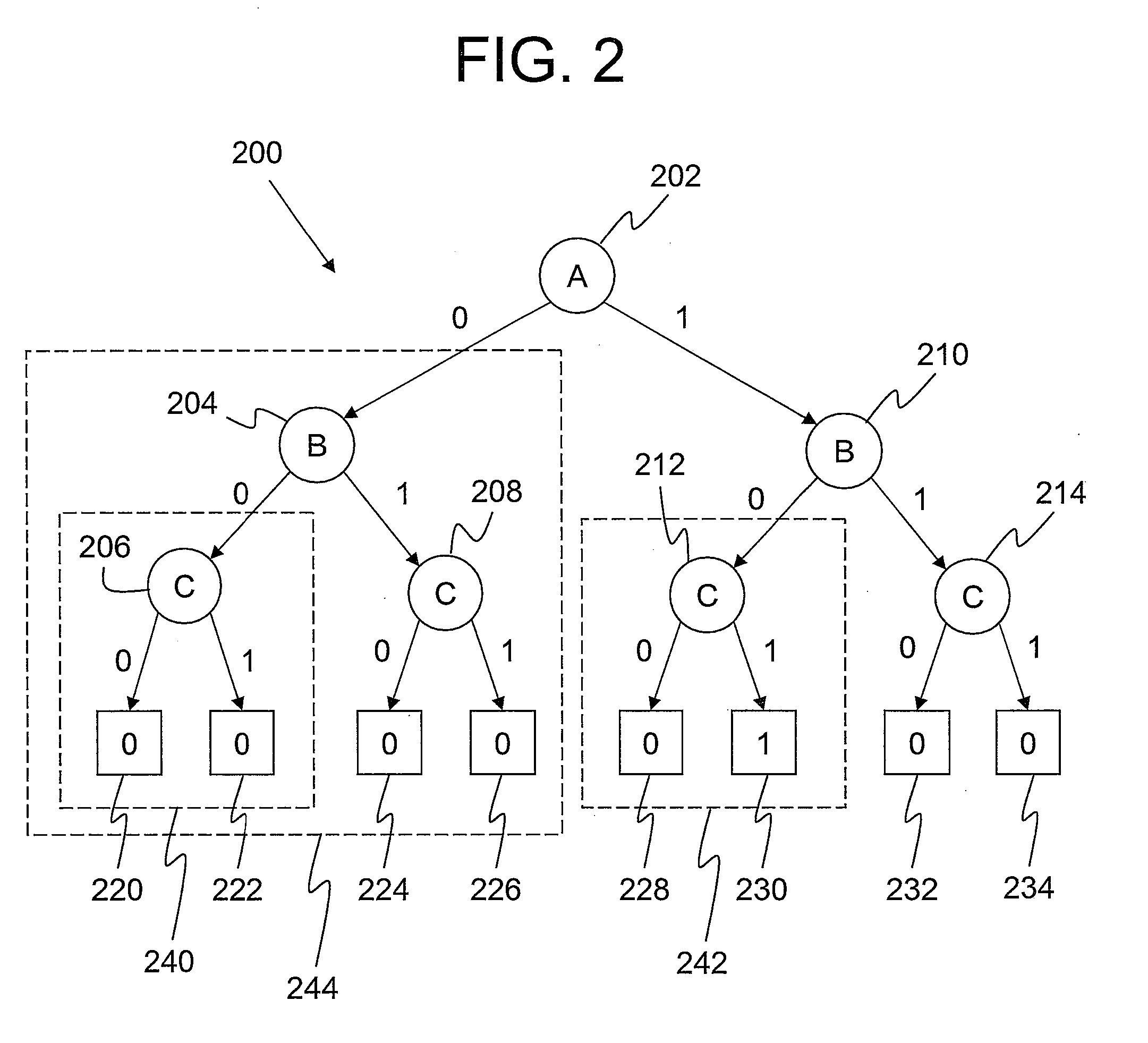Method and System for Conjunctive BDD Building and Variable Quantification Using Case-Splitting
a conjunctive bdd and variable technology, applied in the field of verification circuit designs, can solve the problems of exponential space complexity of bdd, limited reasoning ability, complex manipulating, etc., and achieve the effect of reducing the number of peak live nodes
- Summary
- Abstract
- Description
- Claims
- Application Information
AI Technical Summary
Benefits of technology
Problems solved by technology
Method used
Image
Examples
Embodiment Construction
[0014]The present invention provides an improved method, system, and computer-readable medium for building binary decision diagrams (BDDs) for nodes in a structural netlist representation of a circuit design (a netlist graph). As described below, the present invention applies case-splitting to enable optimal building of BDDs. An aspect of the present invention includes case-splitting on a selected variable during BDD building if a certain threshold on system memory consumption is reached. Another aspect of the present invention includes leveraging case-splitting to perform “on-the-fly” variable quantification during the BDD building, as opposed to going through an explicit quantification step later.
[0015]With reference now to the figures, and in particular FIG. 1, netlist graph 100 is shown. A netlist graph is a directed graph with vertices (nodes A-J) representing logic gates, and edges 102-122 representing interconnections between those gates. The gates have associated functions, ...
PUM
 Login to View More
Login to View More Abstract
Description
Claims
Application Information
 Login to View More
Login to View More - R&D
- Intellectual Property
- Life Sciences
- Materials
- Tech Scout
- Unparalleled Data Quality
- Higher Quality Content
- 60% Fewer Hallucinations
Browse by: Latest US Patents, China's latest patents, Technical Efficacy Thesaurus, Application Domain, Technology Topic, Popular Technical Reports.
© 2025 PatSnap. All rights reserved.Legal|Privacy policy|Modern Slavery Act Transparency Statement|Sitemap|About US| Contact US: help@patsnap.com



